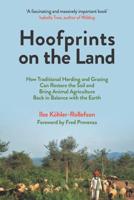Publisher's Synopsis
U.S. Agriculture is also changing rapidly from a sector characterised by production of undifferentiated bulk commodities sold in spot markets to one of specialised markets driven by new end-user demands. As production shifts away from commodity agriculture to product agriculture, vertically integrated agribusiness firms are increasingly organising production into agro-food value chains to synchronise all stages of production from seed to supermarket. Value-added production is a central element of agro-food value chain, and control over specific "identity preserved"(IP) trait is basic to the development of product agriculture. Many farmers and ranchers are beginning to consider how they might reorganise their operation to better anticipate these changes and to participate in them, for example, by forming "new generation" value-added co-operatives, and engaging in increased contract production as sources of new markets, lowered risks, and higher farm and ranch incomes. Emerging opportunities for biomass-based fuels and materials processing facilities, new food processing plants, and alternative farming system (e.g., organic) could create important new markets for producers. Smaller-scale producers find new opportunities in regionally branded products, farmers markets, new speciality crops, ethic markets, or in establishing direct marketing links between farms an regional groceries. This new book examines the status of this important development.










